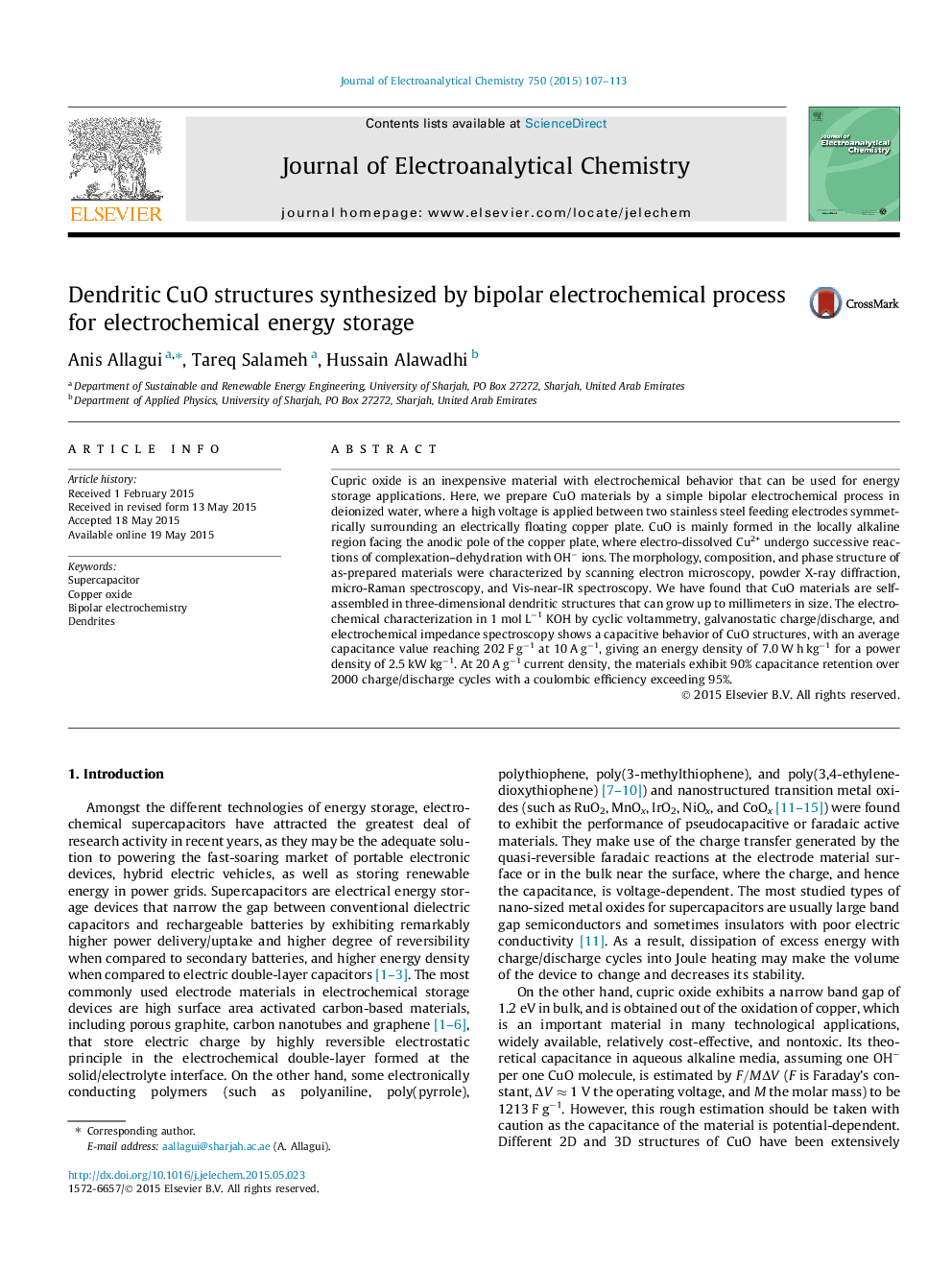| Article ID | Journal | Published Year | Pages | File Type |
|---|---|---|---|---|
| 218357 | Journal of Electroanalytical Chemistry | 2015 | 7 Pages |
•CuO 3D dendritic structures synthesised by bipolar electrochemistry.•Specific capacitance of 202 F g−1 at 10 A g−1, giving 7.0 W h kg−1 at 2.5 kW kg−1.•90% capacitance retention over 2000 cycles @ 20 A g−1.•Wide operation frequency range.
Cupric oxide is an inexpensive material with electrochemical behavior that can be used for energy storage applications. Here, we prepare CuO materials by a simple bipolar electrochemical process in deionized water, where a high voltage is applied between two stainless steel feeding electrodes symmetrically surrounding an electrically floating copper plate. CuO is mainly formed in the locally alkaline region facing the anodic pole of the copper plate, where electro-dissolved Cu2+ undergo successive reactions of complexation–dehydration with OH− ions. The morphology, composition, and phase structure of as-prepared materials were characterized by scanning electron microscopy, powder X-ray diffraction, micro-Raman spectroscopy, and Vis-near-IR spectroscopy. We have found that CuO materials are self-assembled in three-dimensional dendritic structures that can grow up to millimeters in size. The electrochemical characterization in 1 mol L−1 KOH by cyclic voltammetry, galvanostatic charge/discharge, and electrochemical impedance spectroscopy shows a capacitive behavior of CuO structures, with an average capacitance value reaching 202 F g−1 at 10 A g−1, giving an energy density of 7.0 W h kg−1 for a power density of 2.5 kW kg−1. At 20 A g−1 current density, the materials exhibit 90% capacitance retention over 2000 charge/discharge cycles with a coulombic efficiency exceeding 95%.
Graphical abstractFigure optionsDownload full-size imageDownload as PowerPoint slide
